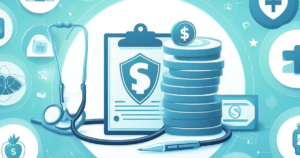Sharing is caring!

Effective revenue cycle management (RCM) is crucial for healthcare providers to navigate the complexities of billing, claims, and collections. In this article, we will explore the top challenges faced by healthcare organizations in their revenue cycle and discuss strategies to overcome them. Leveraging digital tools, analytics, and patient-centric approaches, providers can enhance their financial processes while ensuring optimal patient experiences.
- Enhancing Patient Access: Meeting patient expectations for seamless digital experiences is vital in today’s healthcare landscape. Providers can offer patient portals, mobile apps, and online services to streamline appointment scheduling, registration, and insurance verification. For example, implementing automated patient intake software accessible through mobile devices can provide patients with a convenient and familiar digital experience.
- Improving Collections Recovery Rate: With the rise of high deductible health plans, patients are shouldering more responsibility for their healthcare costs. Providers must implement effective collections strategies to increase revenue and reduce bad debt write-offs. By offering clear and accurate cost estimates, multiple payment methods, and flexible payment plans, providers can help patients navigate the financial process and encourage timely payments.
- Minimizing Billing Errors: Billing errors can significantly impact revenue flow and delay reimbursement. Automating workflows and leveraging integrated claims management software can help reduce errors, improve coding accuracy, and expedite the billing and payment cycle. By streamlining the claims submission process, providers can minimize the time and effort spent on correcting denied claims.
- Addressing Underpayments in Payer Contracts: Contractual issues with payers can result in missed payments or underpayments. Providers should leverage data analytics to gain insights into contract terms and evaluate payments accurately. Contract analysis tools can help providers identify discrepancies and hold payers accountable for fulfilling their contractual obligations.
- Staying Compliant with Regulatory Standards: Keeping up with evolving healthcare regulations and compliance standards is essential to avoid claim denials, payment delays, and administrative backlogs. Providers can utilize healthcare regulatory solutions that provide transparent and patient-friendly estimates. Additionally, staying informed through platforms like the No Surprises Act (NSA) Payer Alerts Portal can ensure compliance with new regulations.
- Harnessing Data-Driven Insights: Utilizing comprehensive data and analytics is crucial for identifying areas of improvement and optimizing RCM efficiency. By analyzing key metrics and trends, providers can pinpoint areas that require attention, such as patient access productivity, billing efficiencies, reimbursements, and payer performance. Integrated revenue cycle management analytics tools help consolidate data from various sources to provide a holistic view of the organization’s financial processes.
- Ensuring Patient Data Security: As digitalization increases, safeguarding patient data becomes paramount. Providers must prioritize patient portal security and adopt measures to authenticate patients securely without causing inconvenience. This includes partnering with vendors who offer robust security solutions and prioritize patient data protection, minimizing the risk of medical identity theft and preserving patient trust.
Conclusion:
Healthcare revenue cycle challenges can be overcome by leveraging digital tools, analytics, and patient-centric approaches. By enhancing patient access, improving collections strategies, minimizing billing errors, addressing contractual issues, staying compliant with regulations, harnessing data-driven insights, and ensuring data security, providers can optimize their revenue cycle management. Embracing these strategies will not only improve financial outcomes but also enhance the overall patient experience.
References
- Top 10 Healthcare RCM Challenges and Tips To Overcome Them ⋆ Geoxis Publication
- (24) Top KPIs in RCM and the Challenges Faced While Implementing it | LinkedIn
- Healthcare Financial Management Association (HFMA): https://www.hfma.org/ )
- Revenue Cycle Management Insights: https://www.revcycleintelligence.com/ )





